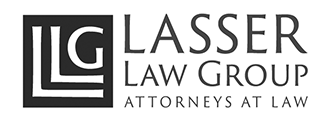A little over a year ago, in August 2019, Congress passed an amendment to Chapter 11 of the Bankruptcy Code known as the Small Business Reorganization Act (the “SBRA”) creating a new Subchapter V for small businesses, which went into effect in February 2020. In order to be eligible to file for bankruptcy under the SBRA, a company must have secured and unsecured debt of less than $2,725,625 (however, this threshold was increased to $7,500,000.00 in March 2020 for a period of one year under the Coronavirus Aid, Relief, and Economic Security (CARES) Act and may be further extended by Congress). The enactment of the SBRA was fortuitous because, in March 2020, many small businesses which lease commercial space were hit with Covid-19 related financial issues and could no longer afford to pay their rent or other debts.
Typically, in the past, small corporate tenants facing insolvency had to choose between filing for Chapter 7 or Chapter 11 bankruptcy in order to prevent landlords from pursuing eviction and collection efforts. In Chapter 7, a company has to liquidate all of its assets, including any leases, in order to satisfy its debts, which is why it is not an option for companies looking to stay in business and maintain their operations. In contrast, Chapter 11 allows a company to stay in business and maintain its operations while it pays off its debts and reorganizes. However, due to the high costs and complexities of reorganizing under Chapter 11, most small companies would file for Chapter 7, liquidate their assets, and walk away from their leases and debts, which was bad for these businesses and their landlords who often would not be able to recoup any past due rent and would also be saddled with a vacant space.
Under the SBRA of Chapter 11, small corporate tenants can do a more streamlined and less expensive Chapter 11 reorganization which allows the company to stay in business while it pays off its debts and attempts to restructure or renegotiate its leases and agreements with its landlords and other creditors. In addition, if the company wants to keep its lease intact (which is known as “assuming” the lease) and continue its operations while in bankruptcy, it must cure all of its lease defaults, including payment of all past due rent as part of the reorganization process, which is good for landlords since they are able to recoup the rent arrears and continue to generate income from the space while the tenant is in bankruptcy.
Similarly to any Chapter 11 bankruptcy, if a tenant files for bankruptcy under the SBRA, it is critical for landlords to be aggressive, but communicative, in the bankruptcy process in order to compel the tenant to assume the lease and start making payments to cure its rent default within 120 days of filing for bankruptcy as required by the Bankruptcy Code (although extensions are possible and seem to be granted more liberally during the pandemic). Otherwise, the landlord’s other option is to compel the tenant to reject the lease and surrender the space so that the landlord can find a new tenant and start generating cash flow, which may be difficult during the Covid-19 pandemic.
Once a tenant files a Subchapter V bankruptcy, landlords should have their legal counsel immediately contact the bankruptcy trustee and the tenant’s bankruptcy attorney in order to compel the tenant to assume the lease and start making rent payments, or seek an expedited rejection of the lease in less than 120 days.
Get the LLG Real Estate Video Podcast and Quarterly Newsletter delivered to your inbox.


